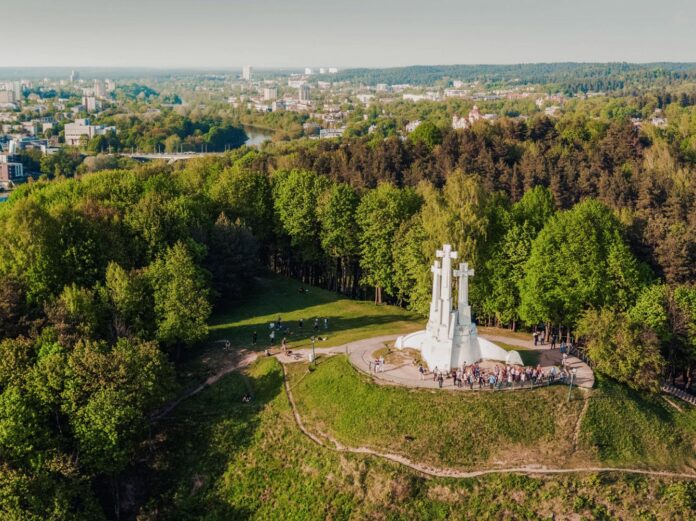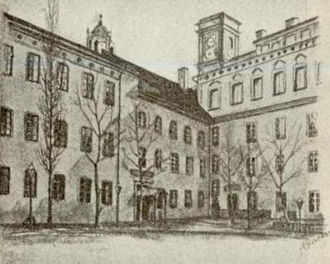
The city of Vilnius, the capital and largest city of Lithuania, has undergone a diverse history since it was first settled in the Stone Age. Vilnius was the capital of the Grand Duchy of Lithuania right until 1795, even during the Polish-Lithuanian Commonwealth. In this article we continue a brief overview of the city’s history up to World War II.
On September 4, 1860, the first train arrived in Vilnius at the completion of the Petersburg-Warsaw railway line. The railway station was built within the next few years. In the second half of the 19th century, Vilnius became an important transport hub, leading to industrial, trade, and population growth.
During the 1863-1864 uprising, 21 rebels, including Konstantinas Kalinauskas and Zigmantas Sierakauskas were executed by the Russian army on the orders of Vilnius Governor-General Mikhail Muravyov. Their remains were found on Gediminas Hill in 2017 and reburied in Rasos Cemetery in 2019.
On October 22, 1864, more than 300 gas lanterns illuminated central Vilnius. Vilnius became the second city in the Russian Empire, after St. Petersburg, to install modern lighting.
The 1st Boys’ Gymnasium, located in the premises of the abolished Vilnius University, was the home of Piotr Stolypin, future Prime Minister of Russia and the author of the land reform, from 1874 to 1879. Other pupils include the future head of the state of Poland, Józef Piłsudski who graduated in 1885, and the founder of the KGB, Feliks Dzerzhinsky, graduate of 1887.
In 1892, the first Jewish public library in Lithuania was opened, one of the most famous Jewish libraries in the world until 1940.
In 1903, the first power plant was opened in Šnipiškės, which operated until 1998. To mark its centenary, the Lithuanian Energy Museum was opened there in 2003.
The Three Crosses Monument designed by Antanas Vivulskis was erected in 1916, now one of the icons of the city. The monument was demolished after World War II and rebuilt again in 1989.
On February 16, 1918, the Council of Lithuania signed the Act of Independence of Lithuania. It proclaimed the establishment of an independent democratic Lithuanian Republic, with Vilnius as its capital. The young Lithuanian Republic, however, did not get to keep the city, which was sought by Poles, Belarusians and Bolsheviks. Lithuanian government institutions moved to Kaunas at the end of December 1918 and the Bolsheviks moved into Vilnius at the beginning of January 1919, proclaiming the short-lived Socialist Soviet Republic of Lithuania and Belarus (Lit-Bel). On April 19, 1919, the Polish army led by Piłsudski drove the Bolsheviks out of Vilnius and published the famous proclamation “To the Inhabitants of the former Grand Duchy of Lithuania”.

On October 10-12, 1919, the restored Vilnius University, this time named after King Stefan Batory, reopened. In 1918-1919, the restoration of the university was declared by Lithuanians, Bolsheviks and Poles alike. However, only the Polish restoration lasted.
On October 9, 1920, General Lucjan Żeligowski took control of Vilnius. He soon proclaimed the Republic of Central Lithuania with Vilnius as its capital. In 1922, it joined Poland. The Council of Ambassadors and the international community recognized Vilnius as part of Poland in 1923. The Lithuanian authorities never accepted the status quo and continued to claim sovereignty over the Region of Vilnius. Also, the city itself was declared the constitutional capital of the Lithuanian state while Kaunas was only a temporary capital of Lithuania. Lithuania closed the border and broke all diplomatic relations with Poland. The two countries remained at the de facto state of war until the Polish ultimatum to Lithuania in 1938.





























